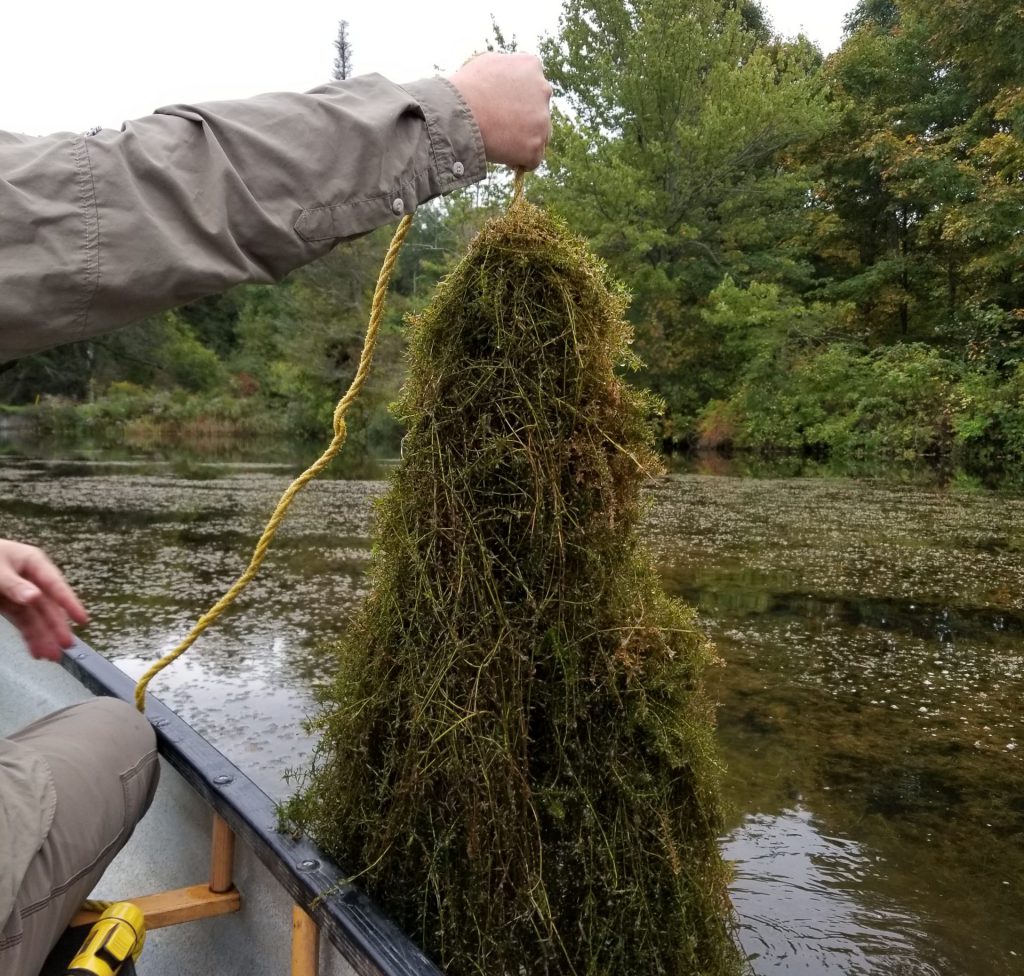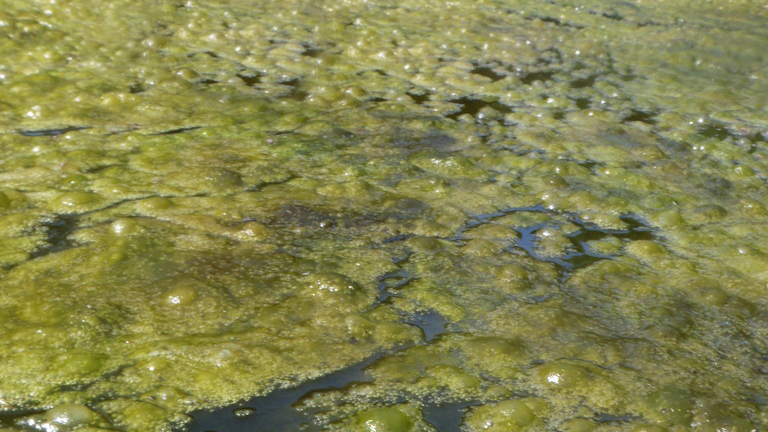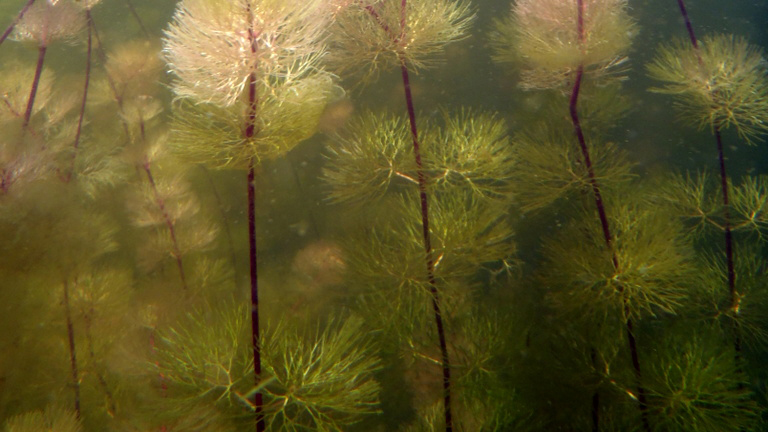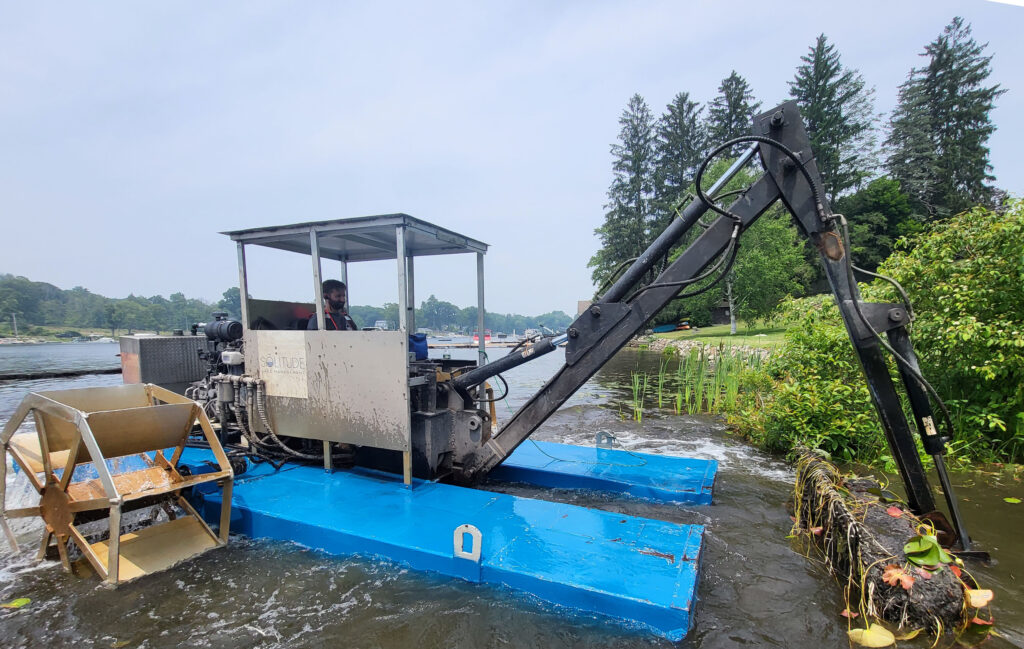
Preventing Algae and Weeds In a Body of Water
Algae and invasive weeds are not just unsightly – they can be symptoms of deeper problems in aquatic ecosystems. Pond algae are a diverse group of organisms that can flourish to dangerous levels under certain conditions, leading to what is commonly known as algal blooms. These blooms can deplete oxygen levels in the water, potentially causing fish kills and disrupting aquatic life. Similarly, invasive pond weeds can outcompete native species, altering habitat structures and food sources for aquatic organisms.
Both pond algae and invasive weeds can significantly impact water quality, recreational activities, and even property values. Understanding the root causes of their proliferation is the first step towards maintaining pond algae control, ensuring they remain healthy, vibrant, and safe.
How Do Algae and Weeds Get in My Pond?
Algae and weeds develop in lakes and ponds primarily as a result of high nutrient levels in the water. Nutrients, such as nitrogen and phosphorus, often enter the water through stormwater runoff from nearby lawns, gardens, or agricultural fields. These nutrients act as a fertilizer for pond algae and aquatic weeds, promoting their growth. Additionally, sunlight plays a crucial role in photosynthesis, providing the energy these organisms need to grow. Warm water temperatures further create an ideal environment for pond weeds and algae to thrive. Together, these conditions set the stage for algal blooms and the proliferation of aquatic weeds, which can quickly overtake a pond if not properly managed.
Identifying Pond Weeds and Algae
Understanding the specific types of algae and weeds in your body of water is crucial for effective pond algae control. Various species of algae and pond weeds respond differently to treatment methods, so knowing the exact species can save time, effort, and resources. In addition, some types of pond algae and weeds can be harmful to aquatic life or the ecosystem. For instance, certain algal blooms, like cyanobacteria, can produce toxins that can be dangerous to fish, other wildlife, and even humans. Identifying these harmful species early allows for quick action to help minimize their impact.
Here are some of the most common types of algae and aquatic weeds:
- Filamentous Algae
- Planktonic Algae
- Macro Algae
- Submerged Plants (Hydrilla, Fanwort, Starry Stonewort)
- Floating Plants (Water Hyacinth, Water Lettuce, Water Chesnut)
- Emergent Plants (Water Primrose, Torpedograss, Alligator Weed)
How To Get Rid of Pond Algae and Weeds
Controlling pond algae and invasive weeds is crucial for maintaining a healthy aquatic ecosystem. Algal blooms and abundant weed growth can lead to unsightly appearances and unpleasant odors and can even harm or kill fish and other wildlife. Furthermore, they can hinder recreational activities, such as fishing, swimming, and boating. So, how do you get rid of algae in a pond? Luckily, there are a variety of solutions to help with pond algae control.
Using Herbicides and Algaecides
Effective control of nuisance and invasive pond weeds and algae can be challenging but achievable with patience, diligence, and various strategies – which include herbicides and algaecides. When applied correctly, herbicides and algaecides are used to eliminate harmful plant species and algal blooms in aquatic ecosystems. Despite some negative perceptions, often due to misuse, it’s crucial to recognize that herbicides and algaecides undergo rigorous EPA testing and SOLitude’s aquatic experts only utilize EPA-registered products.
Highly targeted herbicides like ProcellaCOR offer more precise targeting of invasive pond weeds, such as water milfoil, hydrilla, and water hyacinth, among others, facilitating long-term control without annual reapplication. ProcellaCOR distinguishes itself with a significantly lower dosage requirement (100-1000x less than traditional herbicides) while achieving effective weed eradication. Its EPA Reduced Risk status ensures safe application in waterbodies, preserving native plants and allowing uninterrupted recreational use by families and pets.
Natural Algae and Weed Control
If you’re looking for natural strategies to combat lake and pond algae and weeds, there are several solutions available. These solutions are designed to restore and maintain the ecological balance of aquatic environments, ensuring they remain beautiful, functional, and healthy.
Manual Weed Removal Techniques: Mechanical Harvesting
One way to achieve pond weed control is through manual removal. One control method is mechanical harvesting, which offers a direct and immediate solution to nuisance and invasive floating aquatic weeds. The mechanical cutter or harvester is designed to effectively target and remove nuisance aquatic plants, instantly removing pond weeds and restoring open water. This method is particularly adept at removing large areas of unwanted floating vegetation such as water chestnut, salvinia, and water hyacinth.
Manual Weed Removal Techniques: Hydro-raking
Hydro-raking, also known as mechanical raking, serves as an effective method for selectively removing rooted pond weeds and accumulated muck. By clearing out unwanted plants and muck from your lake or pond, you can enhance water quality, minimize odor, enhance aesthetics, and improve conditions for recreational activities. The hydro-rake is essentially a floating excavator equipped with a rake attachment that scoops and removes rooted vegetation or bottom muck. It is especially effective in sensitive aquatic environments where traditional equipment cannot reach.

Biological Pond Weed Control
To naturally manage aquatic weeds, the Triploid Grass Carp, a sterile version of the common grass carp, is an effective biological control method. These fish selectively consume many types of invasive pond weeds, reducing weed proliferation without the need for herbicidal treatments. These fish are a great option for those looking to control weeds naturally; however, it’s important to check if Triploid Grass Carp are legal in your state before stocking.
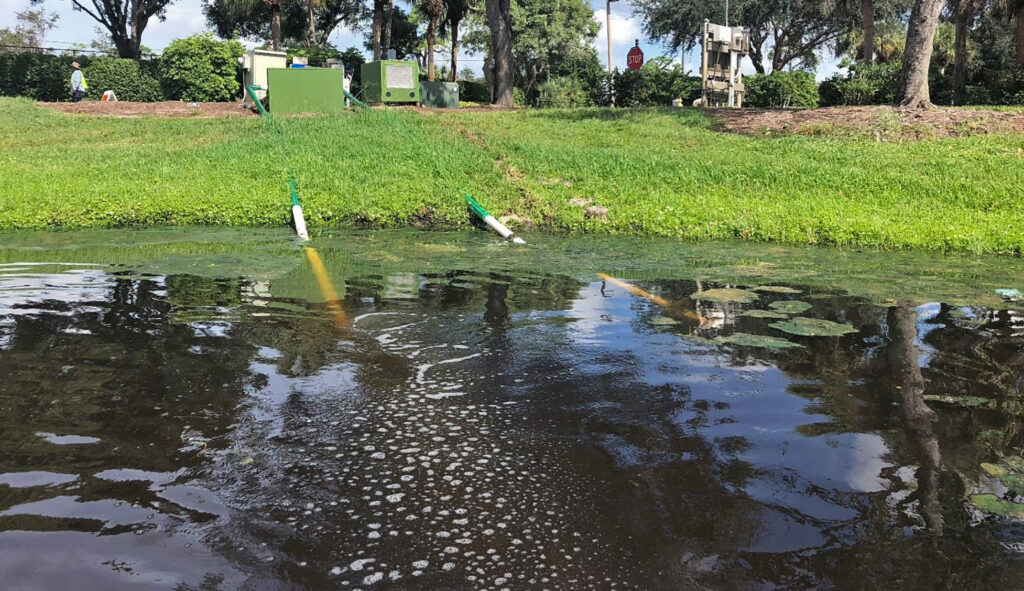
Innovations in Natural Algae Control
Natural methods for pond algae and weed control in ponds and lakes include innovative and environmentally friendly techniques. Two natural algae control tools are nanobubbles and WaterIQ. Nanobubble technology is registered with the EPA as a pesticidal device. It can be used to eradicate nuisance algae naturally and even eliminate cyanobacteria toxins by providing direct and lasting oxygenation to the water body. WaterIQ Technologies is another innovation in natural algae control. This floating device uses 360-degree ultrasonic frequencies to physically manage and prevent green algae, blue-green algae (cyanobacteria), and biofilms. These methods not only address pond algae but also promote a healthier aquatic ecosystem overall.
Preventing Future Algal Blooms
Although pond algae control methods like herbicides and algaecides are effective and safe, they shouldn’t be relied on for ongoing lake or pond management. Adopting proactive practices and implementing an annual management plan for your body of water can help prevent pond algae and aquatic weeds from getting out of hand or developing in the first place. Solutions such as nutrient remediation, fountains and aerators, vegetative buffers, water quality testing, and shoreline management are all great ways to keep your body of water safe and healthy. With an annual management plan in place, our aquatic specialists can help you stay ahead of any potential problems that may arise.
Pond Weed and Algae Control In Action
SOLitude Lake Management is a nationwide environmental firm committed to providing sustainable solutions that improve water quality, enhance beauty and preserve natural resources.
SOLitude’s team of aquatic scientists specializes in the development and execution of customized lake, stormwater pond, wetland and fisheries management programs. Services include water quality testing and restoration, algae and aquatic weed control, installation and maintenance of fountains and aeration systems, shoreline erosion control, muck and sediment removal and invasive species management. SOLitude partners with homeowners associations, golf courses, private landowners, businesses and municipalities. SOLitude Lake Management is part of Rentokil, a leading business services company, operating across the United States, Canada and Puerto Rico.
For more information, visit SOLitude Lake Management at solitudelakemanagement.com, and connect on Facebook, LinkedIn and Twitter.








